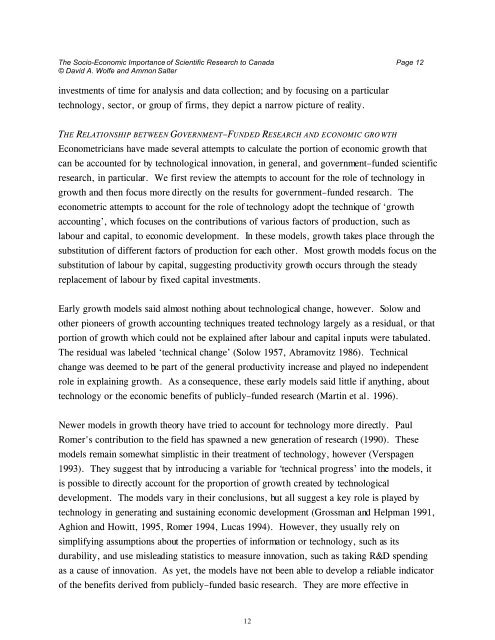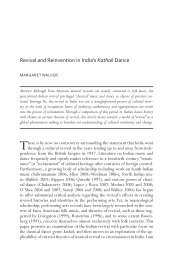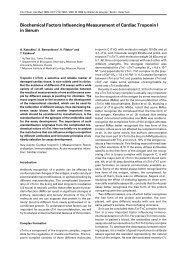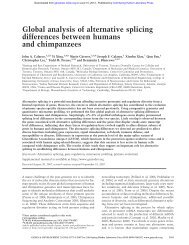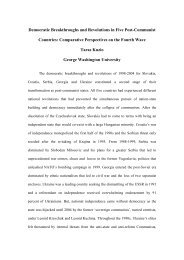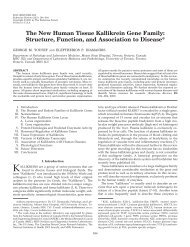The Socio-Economic Importance of Scientific Research To Canada
The Socio-Economic Importance of Scientific Research To Canada
The Socio-Economic Importance of Scientific Research To Canada
Create successful ePaper yourself
Turn your PDF publications into a flip-book with our unique Google optimized e-Paper software.
<strong>The</strong> <strong>Socio</strong>-<strong>Economic</strong> <strong>Importance</strong> <strong>of</strong> <strong>Scientific</strong> <strong>Research</strong> to <strong>Canada</strong> Page 12© David A. Wolfe and Ammon Salterinvestments <strong>of</strong> time for analysis and data collection; and by focusing on a particulartechnology, sector, or group <strong>of</strong> firms, they depict a narrow picture <strong>of</strong> reality.THE RELATIONSHIP BETWEEN GOVERNMENT–FUNDED RESEARCH AND ECONOMIC GRO WTHEconometricians have made several attempts to calculate the portion <strong>of</strong> economic growth thatcan be accounted for by technological innovation, in general, and government–funded scientificresearch, in particular. We first review the attempts to account for the role <strong>of</strong> technology ingrowth and then focus more directly on the results for government–funded research. <strong>The</strong>econometric attempts to account for the role <strong>of</strong> technology adopt the technique <strong>of</strong> ‘growthaccounting’, which focuses on the contributions <strong>of</strong> various factors <strong>of</strong> production, such aslabour and capital, to economic development. In these models, growth takes place through thesubstitution <strong>of</strong> different factors <strong>of</strong> production for each other. Most growth models focus on thesubstitution <strong>of</strong> labour by capital, suggesting productivity growth occurs through the steadyreplacement <strong>of</strong> labour by fixed capital investments.Early growth models said almost nothing about technological change, however. Solow andother pioneers <strong>of</strong> growth accounting techniques treated technology largely as a residual, or thatportion <strong>of</strong> growth which could not be explained after labour and capital inputs were tabulated.<strong>The</strong> residual was labeled ‘technical change’ (Solow 1957, Abramovitz 1986). Technicalchange was deemed to be part <strong>of</strong> the general productivity increase and played no independentrole in explaining growth. As a consequence, these early models said little if anything, abouttechnology or the economic benefits <strong>of</strong> publicly–funded research (Martin et al. 1996).Newer models in growth theory have tried to account for technology more directly. PaulRomer's contribution to the field has spawned a new generation <strong>of</strong> research (1990). <strong>The</strong>semodels remain somewhat simplistic in their treatment <strong>of</strong> technology, however (Verspagen1993). <strong>The</strong>y suggest that by introducing a variable for ‘technical progress’ into the models, itis possible to directly account for the proportion <strong>of</strong> growth created by technologicaldevelopment. <strong>The</strong> models vary in their conclusions, but all suggest a key role is played bytechnology in generating and sustaining economic development (Grossman and Helpman 1991,Aghion and Howitt, 1995, Romer 1994, Lucas 1994). However, they usually rely onsimplifying assumptions about the properties <strong>of</strong> information or technology, such as itsdurability, and use misleading statistics to measure innovation, such as taking R&D spendingas a cause <strong>of</strong> innovation. As yet, the models have not been able to develop a reliable indicator<strong>of</strong> the benefits derived from publicly–funded basic research. <strong>The</strong>y are more effective in12


